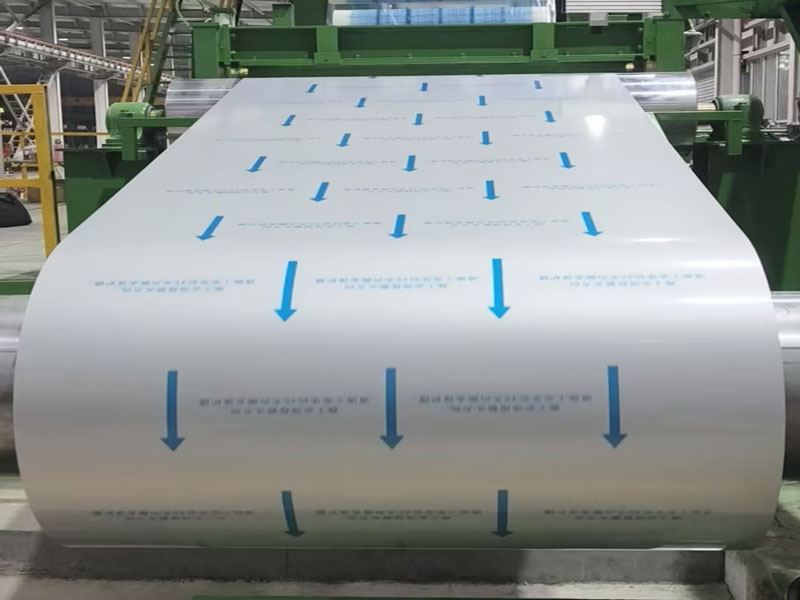
1. Base Material Structure
The base material employs Al-Mg-Mn alloy (Al ≥95%, Mg 1.2-2.5%, Mn 1.0-1.8%) with micro-alloying (addition of 0.1-0.3% Cu, 0.05-0.1% Zn) to enhance grain boundary strengthening. A nano-ceramic coating (30-50μm thickness) forms a "metal substrate + functional coating" composite structure.
2. Antibacterial Function Realization
Ion Implantation Technology: Surface implantation of Ag⁺/Cu²⁺ ions (concentration 5-10 at.%)via plasma-assisted sputtering, achieving bactericidal effects through gradual ion release that disrupts bacterial cell membranes;
Photocatalytic Coating: TiO₂/Graphene composite coating generates reactive oxygen species (·OH, O₂⁻) under UV excitation for photocatalytic sterilization;
Bio-based Antibacterial Layer: Integration of bamboo fiber/chitosan (10-20μm thickness) natural antimicrobial layer, inhibiting microbial growth via physical adsorption and chemical degradation.
| Performance Category | Technical Specifications |
|---|---|
| Mechanical Properties | Tensile strength ≥220 MPa (GB/T 2311), elongation ≥10% (25mm specimen) |
| Antibacterial Performance | - Inhibition rate ≥99.9% against E. coli, Staphylococcus aureus (GB/T 20944.3) - Antibiotic efficacy duration ≥10 years (ASTM E2149) |
| Weather Resistance | Salt spray test ≥6,000 hours (GB/T 1771), ΔYI ≤2 after 2,000h UV aging (CIE Lab) |
| Surface Treatment | Quad-coat process (fluorocarbon primer + antibacterial intermediate + fluorocarbon topcoat), total film thickness ≥80μm |
| Environmental Safety | Compliant with RoHS 2.0/REACH, heavy metal ion leachage <0.01ppm (GB/T 31604.1) |
Base Material Pretreatment
Chemical polishing (NaOH solution, pH=12, 60℃) → Microarc oxidation (450V, 30min) to form porous ceramic layer
Antibacterial Function Integration
PVD deposition of TiO₂ film (20μm thickness)
Plasma spraying of bamboo fiber/chitosan composite layer (15μm thickness)
Ion Implantation: Ar plasma-assisted sputtering of Ag/Cu alloy target, parameters: Energy=50keV, Dose=1×10¹⁵ ions/cm²
Coating Deposition:
Post-treatment & Quality Control
Coating curing (200℃×30min) → Surface micropore sealing (silane coupling agent treatment) → Antibacterial testing (CFU enumeration method)
Medical Cleanrooms
Surgical Room Walls: Shanghai Ruijin Hospital adopted this material for sterile operating zones, reducing bacterial colonization by 90%;
ICU Equipment Enclosures: Combines antibacterial coating with anti-static design, meeting ISO 13485 medical device洁净 standards.
Food Industry
Cold Chain Vehicle Tanks: Qingdao Haier Biomedical’s vaccine transport vehicles utilize this material, achieving microbial contamination rate <10 CFU/cm²;
Vending Machine Panels: Beijing Yibao’s smart vending machines reduce cleaning frequency by 20%.
Public Infrastructure
Subway Platform Screen Doors: Guangzhou Metro Line 18 pilot application reduced sanitation complaints by 65%;
Stadium Seating: Tokyo Olympics venues employed this material with surface CFU count <500 CFU/g.
New Energy Storage
Lithium Battery Module Cases: CATL’s energy storage systems adopt this material, reducing corrosion failure risk by 80% from electrolyte leakage.
Multi-functional Integration
Synergistic design of antibacterial properties and weather resistance, lifespan ≥30 years (ASTM G154 accelerated aging);
40% lower comprehensive cost vs. stainless steel, 70% reduced maintenance expenses.
Process Innovation
In-situ Antibiotic Release Layer: Laser-micron加工 creates micro-grooves (5-20μm width) on surface for directional antibiotic delivery;
Smart Responsive Coating: pH/temperature-triggered controlled release mechanism.
Sustainable Manufacturing
55% lower carbon emissions vs. conventional processes (LCA analysis);
Biodegradable antibacterial coating (90% degradation rate within 28 days, ISO 14855 standard).
Long-lasting Antibacterial Enhancement
Rare-earth element doping涂层 (La³⁺, Ce³⁺) for 24/7 antibacterial effect (laboratory data: ≥99.99% inhibition rate).
Intelligent Monitoring
Integration of quantum dot fluorescent sensors for real-time bacterial load monitoring (detection limit ≤1 CFU/cm²).
Multi-functional Expansion
Self-cleaning + Antibacterial Hybrid Coating: Superhydrophobic structure (contact angle >150°) with synergistic ion release;
EMI Shielding Design: Applicable to 5G base station equipment (shielding效能 ≥40dB).
The antibacterial aluminum-magnesium-manganese colored aluminum sheet revolutionizes health-sensitive applications through material innovation + functional integration. With global demand for healthy buildings and intelligent medical devices surging, its market size is projected to reach $5 billion by 2025 (Grand View Research). Future advancements will focus on ultra-longevity, intelligence, and sustainability, driving transformative innovations in metallic functional materials.